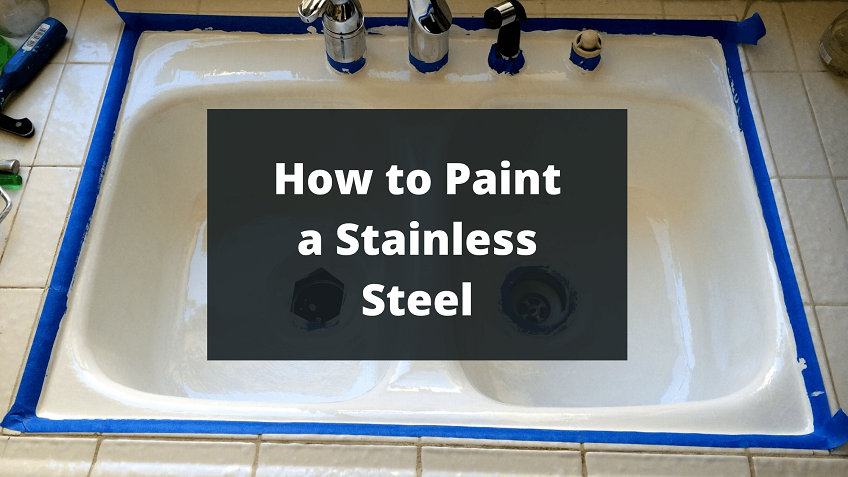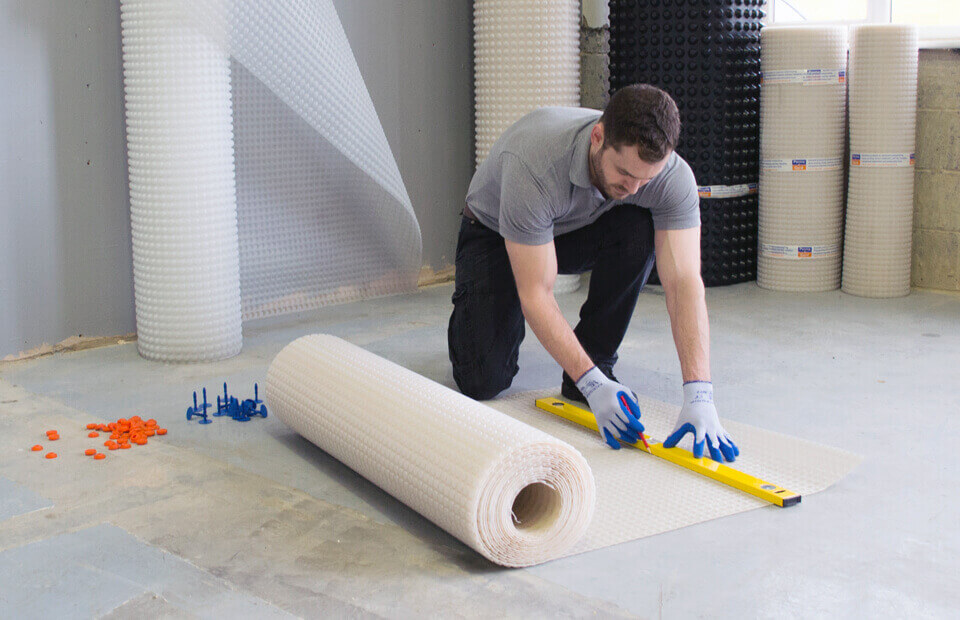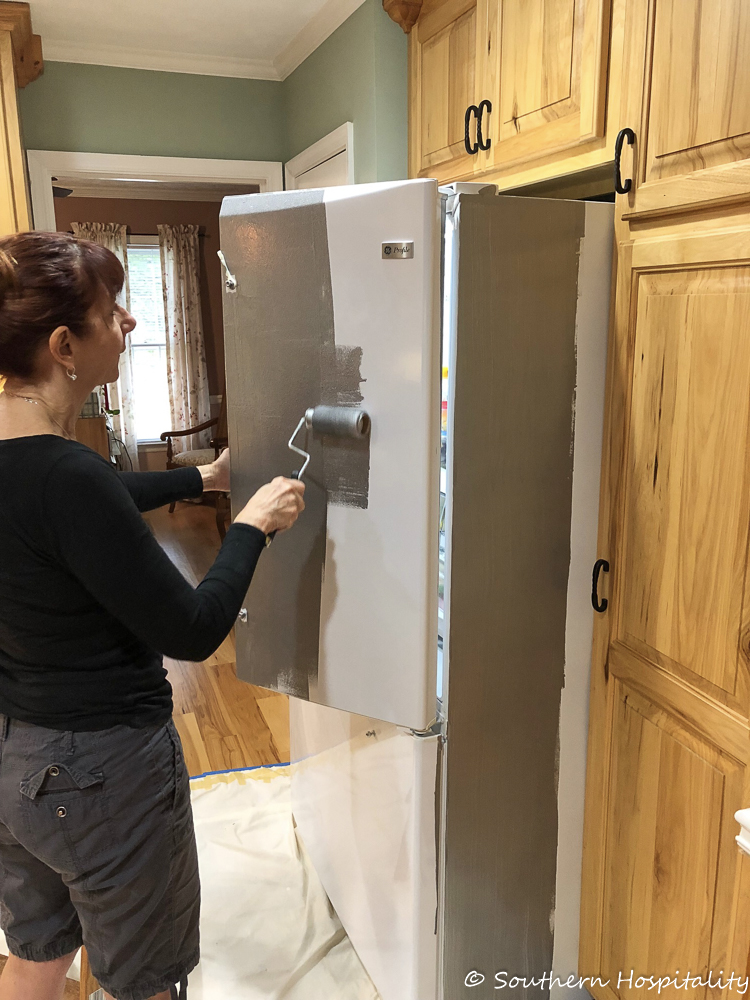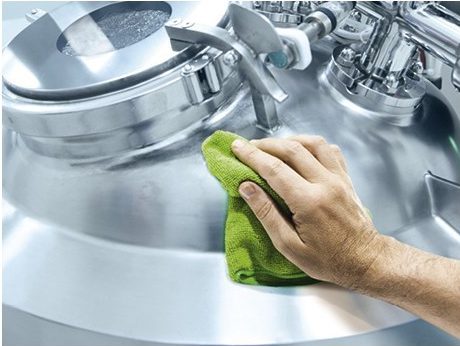
How to Paint Stainless Steel
Stainless steel refers to a broad assortment of iron-based alloys containing at least 11% Chromium that prevents the creation of rust film on the iron surface. This rust-resistant quality gives stainless steel the high-tech, stern, rather cold look that may contribute to our sense of alienation with our stainless steel tables, countertops, or shelving; you have been there, right?
You suddenly feel the classy countertop you had fallen in love with several months or even years ago has lost its vibe that used to attract you. What do you do? Do you make an order on an online retailer’s website for a new stainless still something just because you do not like to paint stainless steel?
Yes! You heard that right. Paint allows your stainless steel tools and surfaces to stand out with a new colour that adds warmth and a palpable texture, and even modern shades of which you cannot take your eyes off. Stainless steel paint, depending on its pigments, can provide a metallic look with a completely safe, non-toxic coating. Although the adhesion process may be slightly time-consuming and difficult, the finish on stainless steel and the texture you get is totally worth it.
Although sounding like something you can do on your own, painting is an accurate process that, most advisedly, must be done by specialists with sufficient experience in the field.
Accordingly, we at Kingpainting work with proficient painting specialists and provide comprehensive information about everything you need to know if you want to have your stainless steel painted and you are based in Sydney, Australia,
Why bother with the paint?
If you are fed up with the current look and vibe of the stainless steel ‘things’ around you, if you feel like it is time you did something to refresh the vibe of your stainless steel, you are probably here to learn how to paint stainless steel. You are in the right place, as this short article shows you how it’s done. All right, first, let’s get into the production flow of stainless steel:
Melting & casting
First, you need to have a dumped pile of steel scarps with some additional elements. Then, this valuable pile is poured into an electric arc furnace. After nearly 8 to 12 hours, the scarps start to melt, followed by a purification phase.

Forming
Depending on what you expect to get from the steel, it might undergo different processes at this stage. Slab, boom, and billet are three products used at this stage.
Heat treatment and descaling
At this stage, deformed microstructures are going to be strengthened by heat treatment. Then, at the descaling stage, the oxidized layer known as the mill scale must be removed.
Work hardening and cutting
Another round of strengthening happens here. Then, you just need to cut the microstructures into the desired shape and size.

Finishing
Finally, stainless steel is made more resistant to corrosion and more appealing for aesthetic purposes by adding a certain amount of different elements, specifically chromium. This stage includes grinding, polishing, buffing, and sandblasting.
Why do we have to paint stainless steel?
Why paint stainless steel in the first place? Given the short but useful description in the above paragraphs, stainless steel is essentially resistant to rusting and is famously an endurable material. Therefore, in most situations, you primarily don’t need to paint stainless steel. For example, in dry environments or when you are using top-notch stainless steel, you don’t need to paint it. However, under two situations, it would make more sense to paint stainless steel.

– First, when your stainless steel is going to be exposed to the marine environment, chemicals, and high humidity, adding a thin but resistant protection layer of paint, although sounding like a tiny step, can go a long way in ensuring higher durability and a new attractive look for your stainless steel.
– Obviously, since finding a cost-effective stainless steel solution is by no means easy, less expensive solutions are becoming more popular at the price of quality and durability, as cheap stainless steel is subject to faster erosion. Painting may be the most practical option for giving stainless steel a bit more protection to overcome this challenge.
– Finally, you might just have aesthetic purposes, right? Stainless steels usually come in grey, but you can go for painting if you want a new look. Aesthetics is not people’s top priority as they tend to take protection and durability more seriously.
Why is it so hard to paint stainless steel?
You might wonder why it is so hard to pain stainless steel or the difference between stainless steel and other surfaces like wooden or plastic. There is a slight but stark difference: Stainless steel has a highly non-porous nature. Therefore, the main problem is that pain is not going to stay on the surface. The challenge here is to scour stainless steel to improve paint adhesion. In the following section, we will talk about how to proceed.

How to paint stainless steel?
In general, painting stainless steel is a tricky thing to do. First, because the amount of chromium inside the steel is variable. So, there is a standard protocol here. In other words, you will need to test different things to figure out what works the best. However, here are some tips for you:
– Before painting, it is imperative to clean the steel very well. Xylene is one of the best compounds here. Adhesives, dirt, and oil drops are wiped out in this way.
– Next thing to do is called jagged sand. What does it mean? It is a bit different from regular sanding. This is mainly because stainless steel is much more rigid than other surface materials. You need to make sure the surface has been scoured thoroughly.
– Using an etching primer is the next step. As mentioned above, testing is the critical factor here. However, based on previous experiences, you can test the following: Benjamin Moore Corotech, PPG, EPX, and INSL-X STIX. How to make sure of their functionality?
First, you have to perform a mock-up. Then, your steel must be kept like this for a month. Finally, if the primer passes the adhesion test, you can use it. What do all these primers have in common? They are galvanized metal-etching primers. Other primers won’t do the job at all.
Tips for painting stainless steel
– What type of paint to buy? The most important thing is to purchase oil-based paint.
– What painting methods are there? All techniques, including spraying, brushing, and rolling, are possible depending on the look you like to achieve and the texture you prefer.
– How to protect the paint? The best thing is buying appropriate wax and sealing the surface to protect the painting.
– Don’t rush on anything! It is not recommended to start painting right after applying the primer. First, let it dry, and then use the paint.
– How many layers of paints do you need? Basically, two or three layers of paint will do. However, let the lower layer dry and then start adding the next.
– What are the other options? Powder coater is another available option with many well-known advantages, such as higher flexibility and the ability to penetrate voids and cracks.
Conclusion
This company based in Sydney, Australia, Kingpainting is one of the best companies active in painting stainless steel. With over 15 years of experience, the company launched its activities in 2005. Our popularity, as they say, lies within the sophisticated and in-detailed services we provide with an outstanding diversity!
Whether your project is large or small, interior or exterior, industrial or residential, Kingpainting will accomplish it neat. Their guarantee covers everything, from tiny problems or to major concerns. For your information, Kingpainting provides residential, commercial, abseil, and strata painting as well as epoxy flooring and line marking services.
